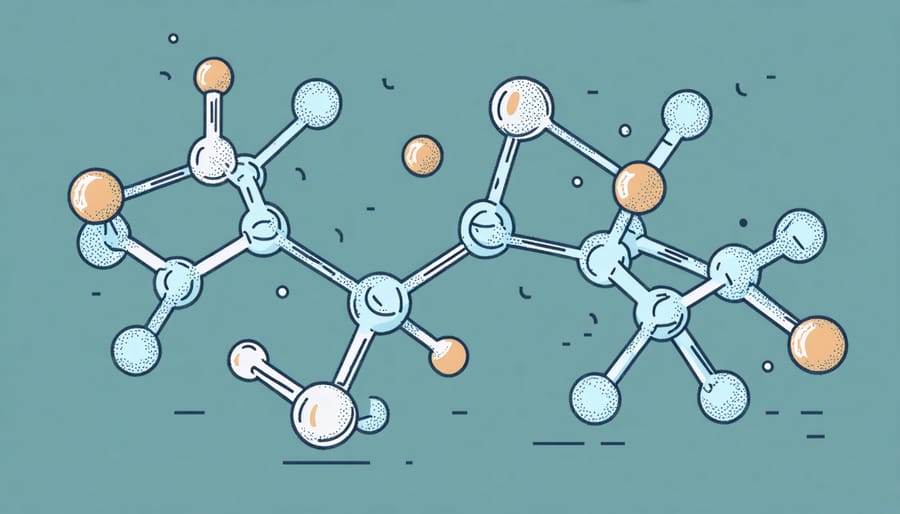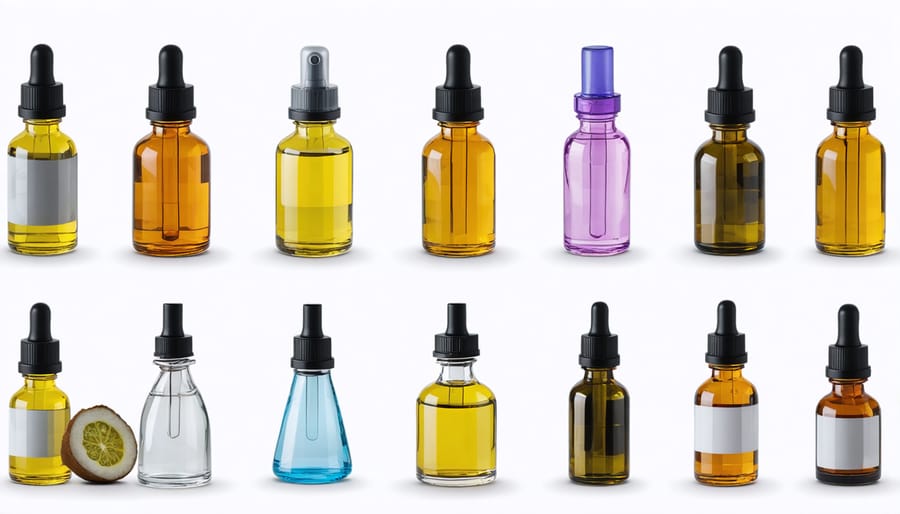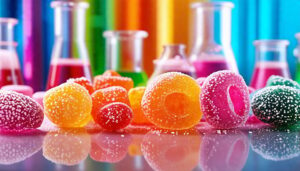
What’s Really in Vaping Liquids? The Chemistry Behind Your Vape
Get your supplies from trusted sources like laval vaping goods to ensure quality and adherence to safety standards. Analyze the primary ingredients of vaping liquids for a thorough understanding of their chemical composition. Examine the role of propylene glycol and vegetable glycerin in forming the vapor, as well as the intricacies of flavoring agents and nicotine levels. Investigate how these components interact during vaporization and the potential health effects involved. For a deeper dive into the subject, check our related vaping facts. Assess potential contaminants and their impact on both the consumer and the environment. Ensure compliance with Canadian standards by regularly consulting updated regulatory guidelines. Moreover, explore sustainable alternatives and innovations emerging within the chemical industry. Stay informed on Canadian chemical advancements to align with national sustainability goals and progressive scientific contributions.
The Basic Components of Vaping Liquids
Propylene Glycol and Vegetable Glycerin
Vaping liquids are primarily composed of two vital ingredients: Propylene Glycol (PG) and Vegetable Glycerin (VG). These compounds serve distinct yet complementary roles in creating the desired vaping experience. PG, a synthetic liquid with a thin consistency, is renowned for its ability to effectively carry flavor and provide a throat hit similar to that of smoking tobacco, making it integral in enhancing the sensory experience of vaping. Its chemical structure, similar to the CBD molecular structure, ensures it is miscible with water, facilitating smooth vapor production.
In contrast, VG is a natural substance derived from plant oils, characterized by a thicker consistency and a mild, sweet taste. Its primary function is to produce dense, voluminous clouds of vapor, thus appealing to those seeking substantial visual effects. VG’s chemical properties include a higher boiling point and more viscous nature, which contribute to its slower vaporization rate compared to PG.
Both PG and VG are recognized for their low toxicity and have been extensively studied for safety in both food and pharmaceutical applications. In Canada, these compounds are used in vaping products, aligning with rigorous safety standards and reflecting the nation’s commitment to sustainable chemical practices. As the vaping industry evolves, the understanding of these compounds’ interactions with other ingredients remains crucial for manufacturing safe and effective vaping products.

Nicotine: The Variable Component
Nicotine, a primary component of many vaping liquids, is an alkaloid derived from the tobacco plant. It is highly variable in concentration, typically ranging from 0 to levels exceeding 50 mg/mL. This variability allows users to select a concentration that suits their preferences, but it also necessitates awareness of its addictive potential. Chemically, nicotine is composed of carbon, hydrogen, and nitrogen atoms, forming a molecule that can readily cross biological membranes, influencing the nervous system. In Canada, regulatory frameworks ensure manufacturers disclose nicotine content clearly, supporting informed choices and promoting sustainability by encouraging research into less addictive alternatives.
Flavorings and Additives
Vaping liquids often include a diverse range of flavorings and additives to enhance user experience. These flavorings, which are responsible for the wide variety of available tastes, are typically food-grade and derived from natural and artificial sources. Chemically, they encompass ester compounds, aldehydes, and ketones, each contributing distinct aromatic profiles. Additives such as propylene glycol and glycerin, commonly used as solvents, assist in vapor production and flavor dispersion. Moreover, nicotine is frequently included as an active component. Canadian researchers are at the forefront of exploring sustainable alternatives in this domain, aiming to minimize potential health risks while ensuring compliance with local regulations.
Variations and Their Impacts on Chemical Composition
Differences in Formulation
The chemical composition of vaping liquids can vary significantly across different brands and formulations, influencing both user experience and potential health impacts. At the core of these differences is the choice of base liquids, typically a mixture of propylene glycol (PG) and vegetable glycerin (VG). Brands often adjust the ratio of PG to VG to achieve specific viscosity and vapor production, affecting the delivery and taste of active ingredients. Furthermore, flavoring agents add complexity to the composition. These can include natural extracts and synthetics, which may also vary in concentration and purity across products. Notably, nicotine levels differ widely among formulations, presenting unique challenges for health assessment and regulation. Canadian researchers are at the forefront of exploring these variations, emphasizing sustainable practices in the development and analysis of vaping liquids. Their work aims to balance user enjoyment with safety and environmental responsibility, aligning with Canada’s regulatory framework. Understanding these differences highlights the importance of informed choices in product selection and supports ongoing scientific inquiry into their implications.

Potential Chemical Reactions
During vaping, various chemical reactions can occur within the liquid, potentially altering its composition and effects. Vaping liquids typically contain a mixture of propylene glycol, vegetable glycerin, nicotine, and flavorings. When these substances are heated, thermal degradation and oxidation reactions can happen, leading to the formation of new compounds. For instance, the heating of propylene glycol and glycerin can result in the production of formaldehyde and acrolein, both of which are known irritants linked to respiratory issues.
Nicotine, an alkaloid naturally found in tobacco plants, may also undergo chemical changes when subjected to heat, potentially forming nicotine-derived nitrosamines, which are carcinogenic. Furthermore, the variety of flavor compounds used in vaping liquids can interact in complex ways under thermal stress. The thermal decomposition of these compounds could yield new structures, some of which might have toxicological or pharmacological properties not yet fully understood.
The implications of these chemical reactions are significant. Understanding them is vital for evaluating the potential health risks associated with vaping. Additionally, these insights offer opportunities for Canadian researchers and industries to innovate solutions that enhance the safety and sustainability of vaping products. With Canada’s regulatory frameworks focused on consumer safety, advancements in this field can help align vaping products with national and international health standards, minimizing adverse health and environmental impacts.
Health and Environmental Considerations
Health Implications
Vaping liquids, often referred to as e-liquids, contain a complex mixture of chemicals that pose various health implications. The primary components of these liquids include propylene glycol, vegetable glycerin, nicotine, and an array of flavoring agents, each with distinct potential health effects. Research suggests that, while vaping may present fewer health risks compared to traditional smoking, it is not without potential harm. Inhalation of certain chemicals found in e-liquids can lead to respiratory issues and lung inflammation. For example, the degradation of propylene glycol at high temperatures can release formaldehyde, a carcinogen known to pose long-term health risks.
Canadian scientists have contributed significantly to advancing the understanding of these potential risks by conducting comprehensive studies on the inhalation toxicity of vaping liquids. Additionally, the impact of flavoring chemicals, used to enhance the vaping experience, is under scrutiny. Some of these substances, when heated, can produce compounds not yet fully understood in terms of their health effects. The presence of nicotine, an addictive substance, further complicates the health landscape, as it may contribute to increased cardiovascular risks.
As the chemical industry moves toward more sustainable practices, ongoing research is crucial to developing safer formulations that minimize health risks. This aligns with the broader Canadian focus on sustainability and public health protection. Continued vigilance and regulatory oversight are paramount in mitigating potential health impacts associated with vaping liquids.
Environmental Impact
The environmental impact of vaping liquids is a multifaceted issue that warrants careful consideration. The production process involves synthesizing a variety of chemicals, each with its unique set of environmental footprints. The solvents and flavorings used often require energy-intensive manufacturing processes that contribute to greenhouse gas emissions. Furthermore, the extraction and refinement of nicotine, primarily derived from tobacco plants, can lead to deforestation and biodiversity loss if not managed sustainably.
Disposal of vaping devices poses additional challenges. The plastic and metal components can contribute to electronic waste, necessitating effective recycling strategies. Unfortunately, improper disposal practices such as discarding cartridges and batteries with general waste can lead to soil and water contamination due to leaching of toxic substances. This is compounded by the difficulty of biodegradation, particularly concerning the persistent nature of some chemical constituents in the environment.
Canada is actively addressing these sustainability challenges by encouraging innovations in eco-friendly production and disposal methods. Organizations and researchers are seeking to develop biodegradable materials and enhance recycling technologies to mitigate the environmental footprint of vaping products. This aligns with global efforts to prioritize sustainability in the chemical industry, reducing the ecological impact while facilitating responsible use of vaping technology. Further understanding and collaboration are vital to ensuring that environmental considerations are integrated into every stage of the lifecycle of vaping materials.

Regulations and Standards in Canada
Current Canadian Regulations
In Canada, the regulation of vaping liquids, including their chemical composition, is primarily governed by the Tobacco and Vaping Products Act, enforced by Health Canada. This framework is designed to protect public health by controlling the constituents of vaping products, ensuring that manufacturers comply with strict standards. Vaping liquids must not contain prohibited ingredients such as vitamins, minerals, and nicotine levels exceeding the legal limit. Furthermore, Health Canada mandates comprehensive ingredient disclosures, promoting transparency and consumer safety. An emphasis on sustainability is reflected in guidelines encouraging manufacturers to consider environmental impacts during production and disposal processes. Canadian regulations also address marketing practices, restricting claims that could mislead consumers about the health benefits of vaping compared to traditional smoking. As research progresses, Canada remains committed to updating its regulatory approach, considering new scientific evidence to safeguard public health while fostering innovation within the chemical industry.
Industry Implications
The evolving regulatory landscape surrounding the chemical composition of vaping liquids in Canada presents both challenges and opportunities for the chemical industry. Stricter regulations aim to enhance public health by demanding greater transparency and safety in product formulations. This push encourages innovation in the development of safer alternatives and emphasizes the use of sustainable and eco-friendly materials. Canadian scientists and researchers are at the forefront, contributing to global advancements while ensuring compliance with domestic standards. By fostering collaboration between industry and academia, Canada can lead in creating safer consumer products and set a benchmark for sustainable practices in the chemical sector.
Conclusion
In conclusion, understanding the chemical composition of vaping liquids is pivotal for advancing both academic inquiry and practical applications in the diverse field of chemistry. This exploration unveils a complex mix of substances, ranging from nicotine and propylene glycol to flavoring agents and potentially harmful additives. For students, this knowledge provides a robust foundation to engage with real-world chemical challenges and fosters an awareness of the broader implications of chemical use in contemporary products. Researchers are encouraged to delve deeper into studying these compounds’ interactions and their environmental and health impacts, pushing the boundaries of existing knowledge.
Professionals in the chemistry field can leverage this insight to innovate safer and more sustainable product formulations, aligning with both ethical standards and Canadian regulations. This endeavor not only supports the responsible management of chemical technologies but also contributes to the ongoing dialogue about the future of chemistry. By identifying areas where Canadian scientific achievements can lead sustainable innovation, the chemical industry stands to benefit significantly in a global marketplace increasingly prioritizing environmental consciousness. Emphasizing sustainability allows Canada to safeguard public health and the environment, exemplifying leadership in science and technology. The journey does not just stop at understanding the compounds; it extends to using these insights to craft a safer world, setting the stage for continued progress in the fascinating intersection of chemistry and society. For further exploration of this intriguing evolution, consider the profound discussions surrounding the future of chemistry and its transformative potential.


